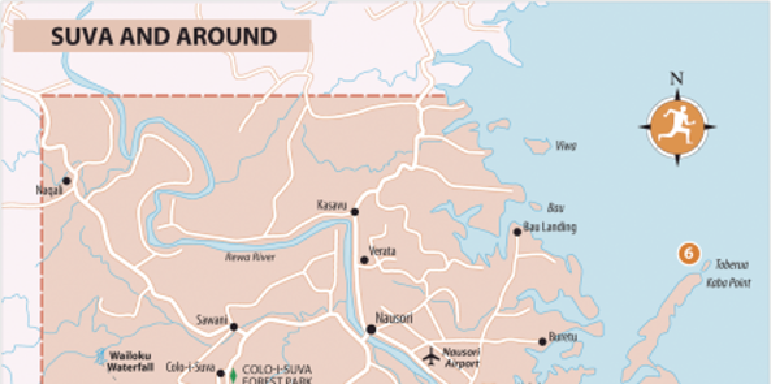Travel Reference
In-Depth Information
Fiji's lively capital city, Suva, sits on a 5km-long peninsula in the southeast corner of
Viti Levu, backed by steep mountains and fronted by a deep-water harbour. Visually it's
one of the most attractive of all the South Seas ports, with pretty colonial buildings in
the centre and moody weather rolling in off the ocean, covering the surrounding rugged
peaks in thundery clouds. Despite the often humid and rainy climate, Suva has a lot go-
ing for it. Shopping is good and the nightlife is excellent, with cool bars, lively restaur-
ants and busy nightclubs. With a population of 86,000 there are also all the facilities you
could hope for, from banks to cinemas, along with all government departments. But a
stream of country dwellers coming to the capital has put pressure on the municipal in-
frastructure, petty crime is an issue and tin shelters on the outskirts house increasing
numbers of needy people.
Apart from the quaint
museum
and stately buildings there are few standout attractions in
central Suva. However, spend some time here and you'll discover a vibrant
cosmopolitan
city with strong community bases from all corners of the Fijian archipelago and across the
entire South Pacific. Organizations from throughout the region have their headquarters here
and the University of the South Pacific attracts students from all over the world.
Inland, the lush tropical rainforest of Naitasiri quickly takes hold - the peaceful
Colo-i-Suva
Forest Park
is only twenty minutes' drive from downtown. Suva's poorer neighbourhoods
sprawl north along the Kings Road in an almost constant parade of busy satellite towns to
Nausori, an industrial and farming centre home to Suva's domestic airport along the banks of
the imposing
Rewa River
. The river and its surrounding mangrove estuaries have long been
Fiji's tribal power-base, with both the Burebasaga Confederacy of Rewa and the Kubuna
Confederacy of
Bau
based in the region.

